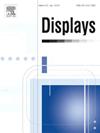IF 3.7
2区 工程技术
Q1 COMPUTER SCIENCE, HARDWARE & ARCHITECTURE
引用次数: 0
摘要
基于深度学习的图像处理方法在提高水下图像质量方面取得了显著成效。这些方法通常通过下采样操作提取不同感受野的特征,然后通过上采样操作增强水下图像。然而,这些下采样和上采样操作不可避免地会破坏原始水下图像中相邻像素的关系,从而导致图像细节的丢失。有鉴于此,我们提出了一种多流特征融合网络(MSFFNet)来丰富细节、校正色彩并增强退化水下图像的对比度。在 MSFFNet 中,多流特征估计模块经过精心设计,分别将原始分辨率特征图和低分辨率特征图作为输入。多流特征估计块在提取高级特征的同时,还能有效保留原始水下图像的细节信息。此外,还设计了一个坐标残差块,以根据位置知识强调有价值的特征并抑制噪声。局部-全局特征融合块用于选择性地融合互补的多尺度特征。最后,在真实水下图像和合成水下图像上进行的大量对比实验证明,所提出的 MSFFNet 在水下图像增强任务中表现出色。本文章由计算机程序翻译,如有差异,请以英文原文为准。
MSFFNet: Multi-stream feature fusion network for underwater image enhancement
Deep learning-based image processing methods have achieved remarkable success in improving the quality of underwater images. These methods usually extract features from different receptive fields through downsampling operations, and then enhance underwater images through upsampling operations. However, these operations of downsampling and upsampling inevitably disrupt the relations of neighboring pixels in raw underwater images, leading to the loss of image details. Given this, a multi-stream feature fusion network, dubbed MSFFNet, is proposed to enrich details, correct colors, and enhance contrast of degraded underwater images. In MSFFNet, the multi-stream feature estimation block is carefully constructed, which separately takes original resolution feature maps and low-resolution feature maps as inputs. The multi-stream feature estimation block proficiently preserves the details information of the original underwater image while extracting high-level features. Besides, a coordinate residual block is designed to emphasize valuable features and suppress noises based on position knowledge. A local–global feature fusion block is presented for selectively fusing the complementary multi-scale features. Finally, extensive comparative experiments on real underwater images and synthetic underwater images demonstrate that the proposed MSFFNet has superior performance on underwater image enhancement tasks.
求助全文
通过发布文献求助,成功后即可免费获取论文全文。
去求助
来源期刊

Displays
工程技术-工程:电子与电气
CiteScore
4.60
自引率
25.60%
发文量
138
审稿时长
92 days
期刊介绍:
Displays is the international journal covering the research and development of display technology, its effective presentation and perception of information, and applications and systems including display-human interface.
Technical papers on practical developments in Displays technology provide an effective channel to promote greater understanding and cross-fertilization across the diverse disciplines of the Displays community. Original research papers solving ergonomics issues at the display-human interface advance effective presentation of information. Tutorial papers covering fundamentals intended for display technologies and human factor engineers new to the field will also occasionally featured.
 求助内容:
求助内容: 应助结果提醒方式:
应助结果提醒方式:


